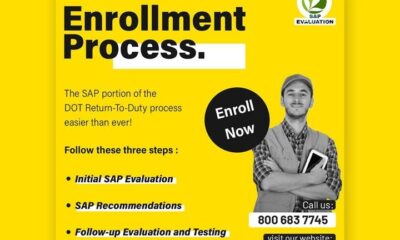If you are reading this document, you are likely searching for information about substance abuse services (SAP Evaluation) in your area. You may be concerned because a loved one is abusing drugs or alcohol, and you want to help them get the professional care they need. Or perhaps you are concerned because you yourself have a problem with drugs or alcohol; in that case, you likely want to find out where to go for help without further endangering your situation. You will find here a wide range of information about different substances and their potential effects on users. You will also find information about specific substance abuse services and where they can be found, including both public and private options. Whether you or someone close to you needs help right away or at some point down the road, this document will serve as an excellent resource to get you started on the right path. Read on to learn more.

The Basics of SAP Clearinghouse
Substance abuse, also known as substance misuse, is a pattern (SAP Clearinghouse near me) of use that results in adverse consequences for the user. Substance abuse can involve the use of prescription medications, over-the-counter medications, and illegal Substance. Substance abuse can also include the use of alcohol or other substances in harmful ways, such as high-risk use, abuse during pregnancy, or driving under the influence. Substance misuse can result in negative health effects and worsen other health conditions. Colloquially, the term “addiction” refers to substance abuse. However, the terms are not interchangeable. Addiction is a medical term that refers to a disease that causes some people to habitually crave substances, such as drugs or alcohol. In this context, it is possible for an individual to be addicted to one substance but not others.
Alcohol Abuse Help
Alcohol is the most widely used and abused substance on the planet, and the vast majority of users never have a problem with excess. Many people have a drink or two on a regular basis, and it never becomes a problem. For those who do have a problem with alcohol, however, the situation can be severe. Alcoholism can result in a wide range of issues, including divorce, relationship problems, poor employment prospects, and even death. Many users have found that alcohol abuse help is available in several different ways. – Inpatient treatment – If a person needs a more intense level of alcohol abuse help, they might choose to go to an inpatient treatment program. Inpatient treatment is generally the most intense level of alcohol abuse help. People in this level of alcohol abuse help often live on the premises of the treatment center for 30 or more days. – Outpatient treatment – If a person’s alcohol problem is less severe but still needs alcohol abuse help, they might choose to go for outpatient treatment. With this level of alcohol abuse help, the person does not live at the treatment center, but they do meet with therapists at the facility regularly. – Twelve-step programs – Alcoholism is an addiction, and addictions can be difficult to overcome. Fortunately, alcohol abuse help is available through a wide variety of twelve-step programs. – Rehabilitation facilities – Some people might choose to go to a rehabilitation facility rather than pursue alcohol abuse help through a twelve-step program. These facilities can be helpful in some cases but should be approached with caution.
Drug Abuse Help (DOT Return to Duty near me)
DOT Return to Duty near me help is available for people who have become addicted to drugs such as heroin, cocaine, or methamphetamine. Some people may start taking drugs as a way to deal with pain or stress in their lives. Because of the nature of this problem, most drug abuse help programs require participants to be in a residential treatment center for at least several weeks. Drug abuse help may also be available for people whose drug use has become problematic but who have not yet developed an addiction. – Inpatient treatment – Some people may choose to start with inpatient drug abuse help. This type of treatment typically requires the person to live at the treatment center for several weeks while they undergo therapy. – Outpatient treatment – Other people may choose to start with outpatient drug abuse help. In this case, they meet with a therapist regularly but do not stay at the treatment center. – Medication-assisted treatment – Some people may choose to start with medication-assisted treatment. This type of drug abuse help uses drugs such as methadone to reduce cravings for heroin or other opiates.

Other Help for Substance Abuse Problems
Some people may want to try alcohol abuse help or drug abuse help, but either of those options may not be a good fit. Fortunately, there are a number of other options for people who need help with a substance abuse problem. – Self-help groups – Some people may want to try self-help groups such as Alcoholics Anonymous or Narcotics Anonymous. These programs are based on peer support rather than the guidance of professionals. – Counseling – People who need help with a substance abuse problem may also benefit from cognitive behavioral therapy or other types of counseling. – Support groups – In some cases, people may also benefit from support groups such as SMART Recovery, Secular Organizations for Sobriety (SOS), or Women for Sobriety.
Summing up
Substance abuse occurs when a person uses a substance in a way that causes them harm. The most common substances that cause problems are alcohol and drugs. Although people may choose to use substances, they become abusers when those substances cause problems in their lives. People with substance abuse problems may want to seek alcohol abuse help or drug abuse help. Other options may be helpful for people who need help with a substance abuse problem but do not want to participate in a 12-step program.










































